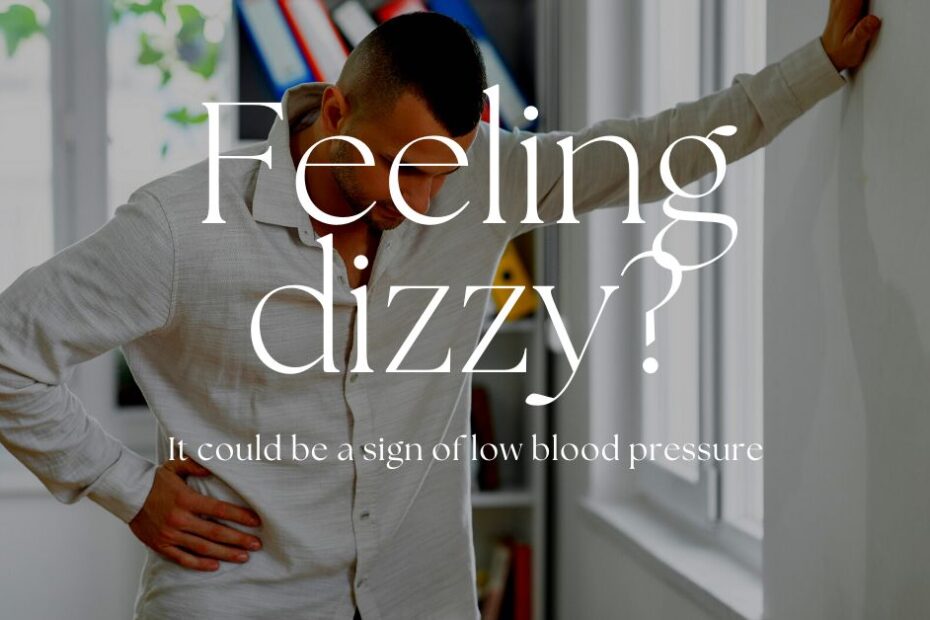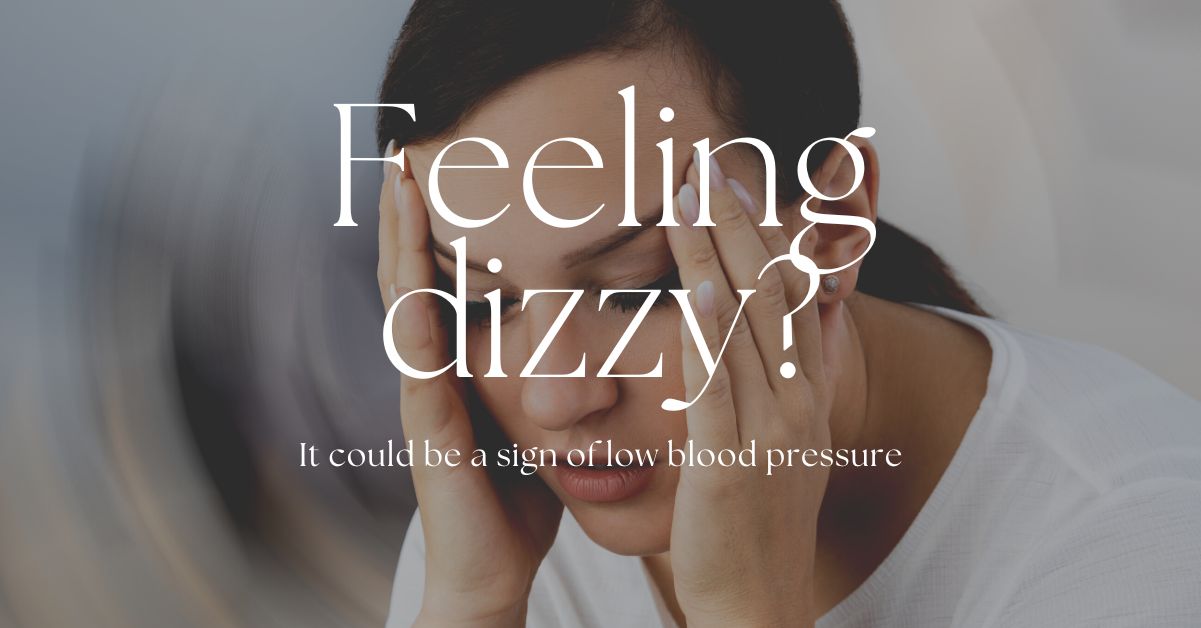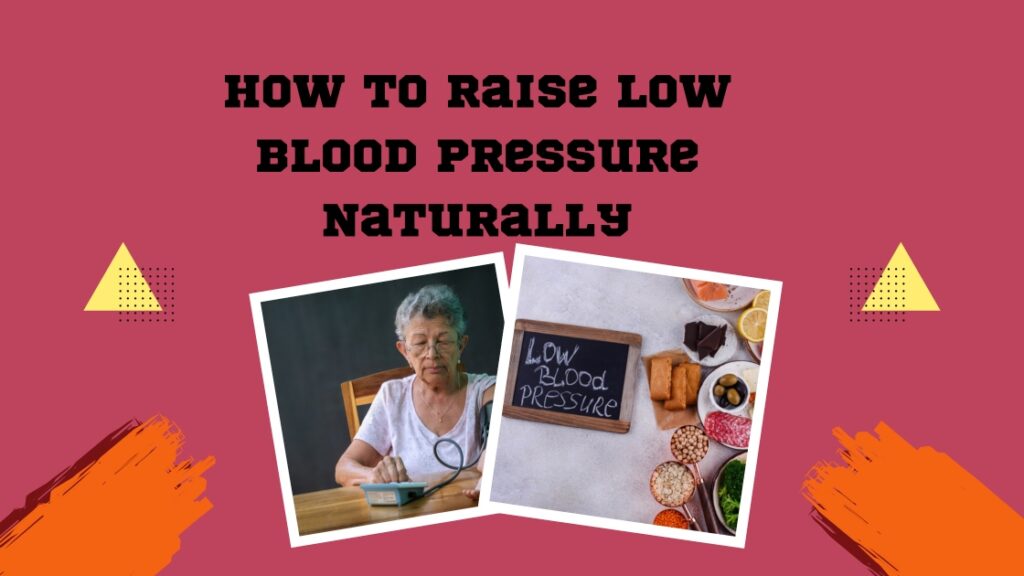Last updated on July 30th, 2023 at 12:59 pm
Feeling dizzy is a common condition that can be caused by various factors, including low blood pressure. Low blood pressure occurs when the brain doesn’t receive enough blood and oxygen, leading to dizziness. Dehydration, inner ear problems, medication side effects, and neurological disorders are other possible causes.
Vertigo is a type of dizziness that is characterized by a sensation of spinning or whirling. It is often caused by problems in the inner ear or the brain, but it can also be triggered by a variety of factors.
When blood pressure drops, it can reduce blood flow to the brain and cause dizziness, lightheadedness, and vertigo.
Low blood pressure can be caused by a variety of factors, including dehydration, heart problems, endocrine problems, and certain medications. In some cases, low blood pressure may be a normal variation and not cause any symptoms.
If low blood pressure is causing vertigo, treatment may involve addressing the underlying cause. For example, if dehydration is the cause, increasing fluid intake may help. If a medication is causing low blood pressure, switching to a different medication or adjusting the dosage may be necessary.
In some cases, lifestyle changes such as increasing salt intake or wearing compression stockings may be recommended to help improve blood pressure and reduce symptoms of vertigo. In more severe cases, medication such as fludrocortisone or midodrine may be prescribed to help raise blood pressure.
The Ups and Downs of Vertigo: Causes and Treatments
Here are some common triggers of vertigo that you should be aware of:
Inner ear disorders: Vertigo is often caused by disorders of the inner ear, such as benign paroxysmal positional vertigo (BPPV), vestibular neuritis, and Meniere’s disease.
Migraines: Migraines can cause vertigo, as well as other symptoms such as headache, nausea, and sensitivity to light and sound.
Medications: Certain medications, such as antibiotics, antidepressants, and blood pressure medications, can cause vertigo as a side effect.
Dehydration: Dehydration can cause dizziness and lightheadedness, which can trigger vertigo.
Anxiety and stress: Stress and anxiety can cause dizziness and contribute to symptoms of vertigo.
Head injuries: Head injuries can damage the inner ear or the nerve pathways that are responsible for balance, leading to vertigo.
Positional changes: Certain movements, such as standing up too quickly or rolling over in bed, can trigger vertigo in some people.
Alcohol and caffeine: Alcohol and caffeine can affect the inner ear and contribute to symptoms of vertigo in some people
Causes and Symptoms of Low Blood Pressure
Low blood pressure, or hypotension, can be attributed to factors such as dehydration, heart problems, blood loss, and medications. Symptoms of low blood pressure include dizziness, lightheadedness, blurred vision, fatigue, and fainting. These symptoms can occur suddenly or gradually, depending on the underlying cause.
Concerning Symptoms of Low Blood Pressure
Certain symptoms associated with low blood pressure may require attention:
Blood pressure is the force exerted by the blood against the walls of the arteries as the heart pumps it through the body. A normal blood pressure reading is around 120/80 mmHg, while low blood pressure is typically considered to be reading below 90/60 mmHg.
- Dizziness or lightheadedness: this is one of the most common symptoms of low blood pressure. You may feel like you’re about to faint or lose your balance.
- Fatigue: feeling tired or weak is another common symptom of low blood pressure, as the body may not be getting enough oxygen and nutrients.
- Blurred vision: when blood pressure is too low, the eyes may not be getting enough blood flow, leading to blurry or hazy vision.
- Nausea or vomiting: low blood pressure can also cause digestive issues, such as nausea and vomiting.
- Rapid or shallow breathing: if the body isn’t getting enough oxygen, it may compensate by increasing the breathing rate.
Feeling dizzy can be an alarming and unsettling experience. It can happen suddenly or come on gradually and may be accompanied by other symptoms such as nausea, sweating, or headaches. While dizziness can have many different causes, it is often related to issues with blood pressure.
The Ups and Downs of Dizziness (dizzying): Causes, Symptoms, and Treatment
Stay Hydrated: Ensure you drink an adequate amount of water throughout the day to prevent dehydration-related dizziness, dizzying or feeling dizzy.
Practice Good Posture: Maintain proper posture to promote blood flow and reduce the likelihood of dizziness.
Avoid Rapid Position Changes: Slowly transition from lying down or sitting to standing to allow your body time to adjust.
Manage Stress Levels: Practice relaxation techniques, such as deep breathing or meditation, to alleviate stress-induced dizziness.
- Address Inner Ear Issues: If dizziness is related to an inner ear problem, seek medical attention for a proper diagnosis and targeted treatment.
Remember, dizziness (feeling dizzy) can have different causes for each individual.
Home Remedies for Low Blood Pressure and dizziness
Foods high in vitamin B-12
Too little vitamin B-12 can lead to a certain type of anemia, which can cause low BP and fatigue. Foods high in B-12 include eggs, fortified cereals, animal meats, and nutritional yeast.
Salt
Salt. Salty foods can increase BP. Try eating canned soup, smoked fish, cottage cheese, pickled items, and olives.
Foods high in folate
Too little folate can also contribute to anemia. Examples of folate-rich foods include asparagus, beans, lentils, citrus fruits, leafy greens, eggs, and liver.
Caffeine
Coffee and caffeinated tea may temporarily spike blood pressure by stimulating the cardiovascular system and boosting your heart rate.
More fluids
Dehydration decreases blood volume, causing BP to drop. Staying hydrated is especially important when exercising.
Natural Methods to Safely Increase Low Blood Pressure
In addition to home remedies, you can take these steps to naturally raise your low blood pressure and prevent dizziness:
- First, make sure to eat plenty of nutrient-rich foods high in potassium, like bananas, spinach, and sweet potatoes.
- Eat lower-sodium foods, such as unprocessed fruits, vegetables, whole grains, and lean proteins.
- Also, try to reduce your caffeine consumption if it’s too high.
- Exercise regularly – cardiovascular activities are great for improving circulation and raising BP levels.
- If you blend aerobic and resistance training together this is even better for improving circulation and strengthening the heart muscle.
- Finally, reduce stress with relaxation techniques like yoga or deep breathing. It’s also helpful to practice stress-reduction strategies or activities like talking walks or meditating daily.
Take your health into your own hands and learn how to raise low blood pressure naturally with lifestyle changes!
Start today!
Review: QardioArm Smart Blood Pressure Monitor
I recently had the opportunity to try out the QardioArm Smart Blood Pressure Monitor, and I must say, it has been a game-changer for me. This sleek and innovative device has completely transformed the way I monitor my blood pressure at home. Here’s my in-depth review:
Design and Ease of Use
The first thing that impressed me about the QardioArm is its sleek and compact design. It is incredibly portable and easy to carry around, making it convenient for use both at home and on the go. The device itself is user-friendly, with a simple one-button operation. The cuff is adjustable and fits comfortably on my arm, providing accurate readings every time.
Smart Features and Connectivity
What sets the QardioArm apart from traditional blood pressure monitors is its smart functionality. It seamlessly connects to my smartphone via Bluetooth, allowing me to track and monitor my blood pressure readings effortlessly. The companion app is intuitive and user-friendly, providing detailed insights and trends over time. I can easily share my data with my healthcare provider, which has been incredibly helpful for remote monitoring and consultations.
Accuracy and Reliability
Accuracy is paramount when it comes to blood pressure monitoring, and I can confidently say that the QardioArm delivers. The readings I’ve obtained with this device have been consistent and align closely with those taken at my doctor’s office. It utilizes advanced technology to ensure reliable and precise measurements, giving me peace of mind knowing that I can trust the results.
Additional Features and Benefits
Beyond its primary function of blood pressure monitoring, the QardioArm offers some additional features that enhance its overall value. It tracks irregular heartbeats and detects any potential arrhythmias, providing early warnings and allowing for prompt medical attention. The device also integrates with other health and fitness apps, allowing me to have a comprehensive overview of my overall well-being.
Conclusion
In conclusion, the QardioArm Smart Blood Pressure Monitor has exceeded my expectations. Its sleek design, ease of use, smart features, and accurate readings make it an exceptional device for anyone looking to monitor their blood pressure at home. The convenience of tracking and sharing data through the companion app has been invaluable in managing my health effectively. I highly recommend the QardioArm to anyone in need of a reliable and user-friendly blood pressure monitor.
Source & Credits:
https://www.mayoclinic.org/diseases-conditions
https://www.healthline.com/health/low-blood-pressure-diet#what-to-eat
Read more – 7 Natural Ways to Lower Your High Blood Pressure
This site contains affiliate links to products. We may receive a commission for purchases made through these links



